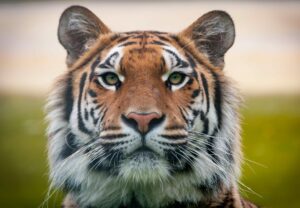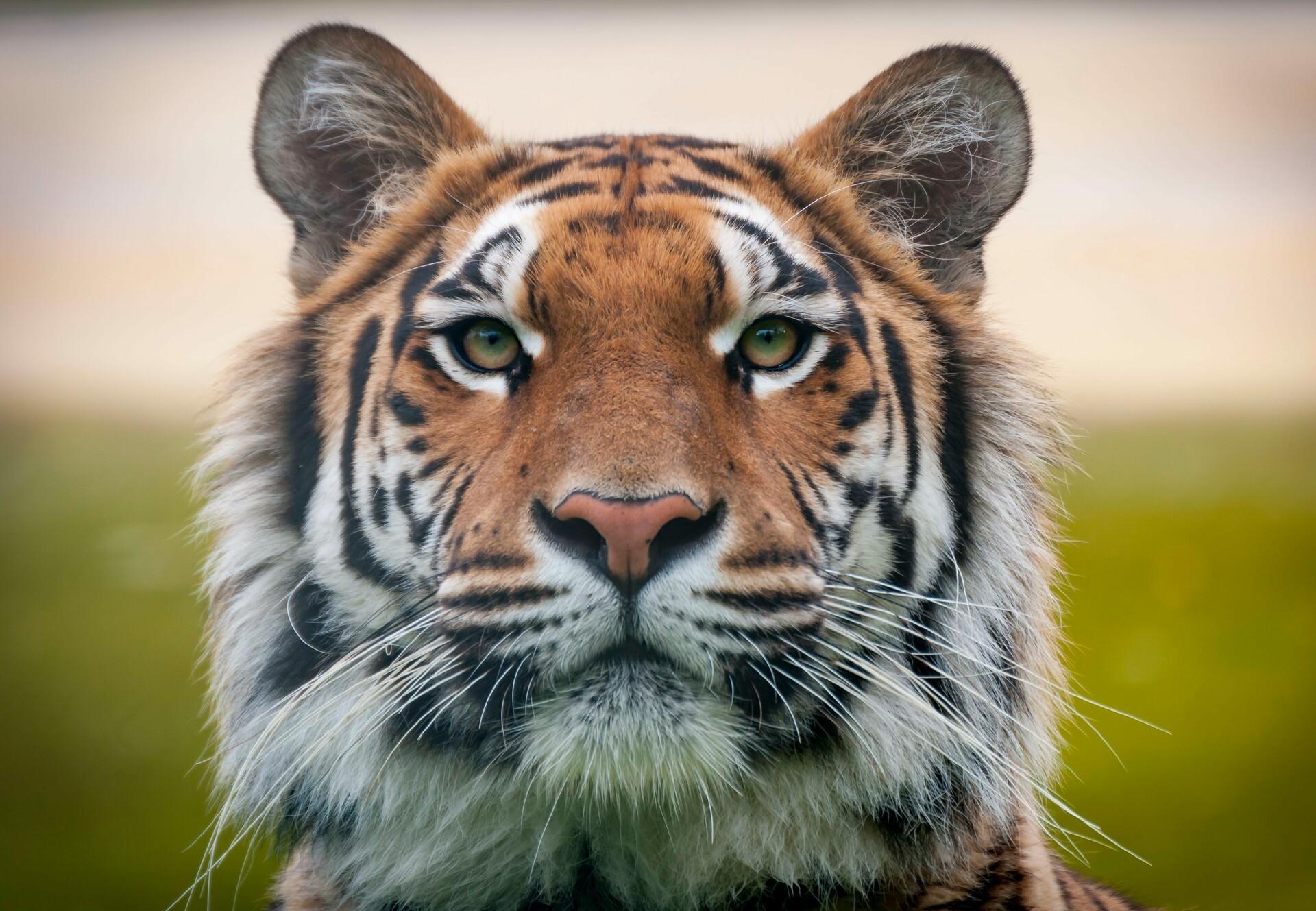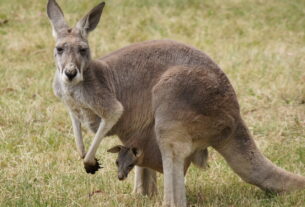In the intricate web of nature, predators play an indispensable role beyond their dramatic and often ferocious hunting behaviors. These natural controllers of pest populations are crucial for maintaining ecological balance and enhancing agricultural productivity. Unlike chemical pesticides, which can have harmful side effects on the environment and human health, natural predators offer a sustainable solution to pest management. They work silently but effectively, keeping pest populations in check and ensuring the health of ecosystems and crops.
From the tiny ladybugs that feast on aphids to the majestic wolves that regulate deer herds, natural predators contribute to the stability of various environments. Their predatory activities help prevent any one species from overwhelming an ecosystem, thus supporting a rich tapestry of biodiversity. In agricultural settings, these natural allies offer farmers a cost-effective and eco-friendly alternative to synthetic chemicals. Understanding the vital role of natural predators in controlling pest populations not only highlights their importance but also underscores the need for conservation efforts to protect these beneficial species.
(pxhere.com)
Ecological Balance and Biodiversity
Natural predators, including birds, insects, mammals, and amphibians, play a pivotal role in maintaining ecological balance by regulating pest populations through predation. This natural control mechanism is essential for preventing any single species from becoming overly dominant, which could otherwise lead to significant disruptions in ecosystem dynamics. By controlling the numbers of various pests, natural predators help sustain the health and diversity of ecosystems, ensuring that different species can coexist without one overpowering the others.
In addition to their role in pest management, natural predators contribute to the overall resilience of ecosystems. Their presence supports a balanced food web, which is crucial for ecosystem stability. For instance, the predation by various species prevents any one group from overwhelming the system, thus avoiding problems like overgrazing or unchecked pest populations. This intricate balance helps maintain a diverse array of plant and animal life, which in turn supports the ecosystem’s functionality and resilience against environmental changes.
(Predatory Insects)
Predatory insects, such as ladybugs (ladybird beetles) and lacewings, are vital in managing plant-eating pests like aphids, mealybugs, and scale insects. Ladybugs, for instance, are well-known for their voracious appetite for aphids, which are notorious for their destructive feeding habits on crops and garden plants. By consuming large numbers of aphids, ladybugs help prevent significant damage to plants, thus playing an essential role in protecting both natural and cultivated environments.
Lacewings, another key group of predatory insects, contribute to pest control by feeding on a variety of soft-bodied insects. Their predation is not limited to adults but also extends to pest eggs and larvae, disrupting the life cycles of harmful species and reducing future infestations. This multi-faceted approach to pest control highlights the importance of maintaining healthy populations of these predatory insects to ensure effective and sustainable pest management.
(Birds)
Birds are significant contributors to pest control, consuming a diverse range of insects, including beetles, caterpillars, and mosquitoes. Species such as wrens, sparrows, and robins actively hunt for insects in gardens, forests, and agricultural fields. By preying on these pests, birds help manage their populations, reducing the reliance on chemical pesticides and promoting a healthier, more balanced ecosystem.
In addition to their role in pest control, birds are also crucial in managing insect populations that serve as vectors for diseases. By feeding on mosquitoes and other disease-carrying insects, birds help mitigate the spread of illnesses such as West Nile virus and malaria. This benefit extends beyond pest management, highlighting the importance of conserving bird habitats to support public health and maintain ecological balance.
(Mammals and Amphibians)
Mammals and amphibians, such as bats and frogs, further contribute to ecological balance through their predatory behaviors. Bats, for example, are highly effective at controlling insect populations. They consume large quantities of insects, including moths, beetles, and mosquitoes. A single bat can eat hundreds of insects in one night, demonstrating their significant impact on managing pest populations and reducing the need for artificial pest control methods.
Similarly, frogs and toads play an important role in controlling pest numbers by preying on insects and other small invertebrates. Their feeding habits help manage pest populations and contribute to the overall health of their habitats. By supporting the populations of these amphibians and mammals, we help maintain the natural balance of ecosystems, where pest populations are kept in check through natural predation.
(Supporting Biodiversity)
The presence of natural predators is crucial for fostering a diverse and healthy environment by supporting a balanced food web. This biodiversity ensures that no single species becomes overly dominant, which can prevent issues such as overgrazing, habitat destruction, and the loss of native species. A well-balanced food web allows various organisms to coexist harmoniously, each playing a role in maintaining the overall stability and health of ecosystems.
Promoting the well-being of natural predator populations and protecting their habitats are essential for sustaining ecological balance and biodiversity. Conservation efforts, such as habitat preservation, reducing pesticide use, and integrating natural pest control methods, are vital for supporting these predators. By valuing and preserving natural predators, we help ensure the long-term health and resilience of ecosystems, benefiting both the environment and human societies.
Benefits to Agriculture
In agriculture, natural predators provide a cost-effective and environmentally friendly alternative to chemical pesticides. Supporting predator populations allows farmers to reduce their reliance on synthetic chemicals, which can have harmful effects on the environment and human health. Chemical pesticides can leach into soil and water, harming non-target species and potentially contributing to pesticide resistance. By utilizing natural predators, farmers can maintain a more balanced ecosystem, where pest populations are controlled through natural processes rather than relying on potentially damaging chemicals.
(Effective Pest Control)
For example, introducing predatory beetles, such as ladybugs, or parasitic wasps into crop fields can significantly improve pest management. Ladybugs are particularly effective at controlling aphid populations, which are known for their destructive feeding habits on plants. Parasitic wasps, on the other hand, lay their eggs on or inside pest insects, with their larvae consuming the host and thereby controlling pest numbers. This method of biological control helps reduce crop damage and promotes healthier plants, leading to better yields and less reliance on chemical pesticides.
The use of natural predators for pest control not only enhances crop protection but also helps to manage pest populations sustainably. By reducing the frequency and intensity of pest outbreaks, these predators contribute to a more stable agricultural environment. This method can also decrease the need for repeated chemical applications, which can be costly and environmentally taxing, thus promoting a more sustainable approach to agriculture.
(Enhancing Soil Health and Pollination)
Promoting natural predators also offers additional benefits such as improved soil health and enhanced pollination. Predatory insects and other beneficial organisms help maintain a diverse ecosystem within agricultural fields. For instance, some predatory insects aid in soil aeration and the decomposition of organic matter, which enhances soil structure and nutrient availability. Healthier soil supports better plant growth, contributing to increased crop yields and resilience.
Furthermore, many natural predators, such as bees and butterflies, play a crucial role in pollination. These insects help fertilize plants by transferring pollen from one flower to another, facilitating fruit and seed production. By fostering diverse predator populations, farmers can support pollinator activity, which is vital for the reproduction of many crops and wild plants. This synergy between pest control and pollination contributes to overall agricultural productivity and sustainability.
(Building Resilient Agricultural Systems)
Integrating natural predators into farming practices can lead to more resilient and robust agricultural systems. Natural pest control methods often result in a more balanced ecosystem, with fewer pest outbreaks and reduced reliance on chemical interventions. This holistic approach not only helps manage pests effectively but also contributes to long-term agricultural sustainability by maintaining the health of both crops and the surrounding environment.
By embracing natural predators, farmers can develop more harmonious farming systems that support ecological balance and promote biodiversity. This approach reduces the impact of agriculture on the environment and helps preserve the health of agricultural landscapes. Over time, these practices can lead to more resilient farming systems that are better equipped to withstand environmental changes and challenges, benefiting both farmers and the ecosystems in which they work.
Conservation of Ecosystems
Maintaining natural predator populations is crucial for effective conservation efforts, as these predators play a key role in sustaining ecosystem health and stability. Predators contribute significantly to the regulation of herbivore populations, which helps prevent overgrazing and the subsequent degradation of vegetation. By keeping herbivore numbers in check, predators ensure that plant communities can thrive and maintain their ecological functions. This dynamic is essential for preserving diverse habitats and supporting a wide range of plant and animal species, ultimately enhancing ecosystem resilience and functionality.
(Regulating Herbivore Populations)
For example, in North American forests, wolves are apex predators that help manage deer populations. Without the presence of wolves, deer populations can become excessively large, leading to overgrazing and significant damage to vegetation. This unchecked grazing can result in the loss of important plant species, reduced biodiversity, and altered habitat structures. Wolves, by preying on deer, help maintain a balanced herbivore population, allowing vegetation to regenerate and sustain other wildlife. This predator-prey relationship is a key component of ecosystem dynamics, contributing to a healthier and more resilient environment.
In addition to wolves, other predators such as mountain lions, bears, and coyotes also play important roles in regulating herbivore populations across different ecosystems. Their presence helps ensure that no single species becomes too dominant, which can prevent ecological imbalances and support the overall health of the ecosystem. By promoting the conservation of these natural predators, we help maintain the intricate balance required for thriving ecosystems.
(Deterring Invasive Species)
Natural predators also play a vital role in controlling invasive species, which can otherwise threaten native biodiversity and disrupt ecological balance. Invasive species often lack natural enemies in their new environments, allowing them to proliferate unchecked and outcompete native species for resources. Predators can help mitigate these impacts by preying on invasive species and preventing their populations from becoming overwhelming. For instance, introducing natural predators to areas affected by invasive pests can help reduce their numbers and limit their spread, thereby protecting native flora and fauna.
The successful management of invasive species through natural predation not only helps preserve native biodiversity but also contributes to the restoration and conservation of ecosystems. By maintaining healthy populations of natural predators, conservation efforts can be more effective in combating invasive species and ensuring the protection of ecological integrity. This approach aligns with broader conservation goals, emphasizing the importance of preserving predator species as part of a holistic strategy for ecosystem management.
Challenges and Considerations
Despite their significant benefits in pest control and ecosystem health, natural predator populations face several challenges that can impact their effectiveness and survival. Habitat loss, climate change, and human activities pose substantial threats to these crucial species. The destruction of natural habitats through urbanization, deforestation, and agricultural expansion reduces the availability of resources and nesting sites for predators. Without adequate habitats, predator populations can decline, leading to less effective pest control and disrupted ecosystem balance.
(Habitat Loss and Fragmentation)
Habitat loss and fragmentation are major concerns for natural predators. As forests, wetlands, and grasslands are converted into agricultural or urban areas, the available habitats for predators diminish. This loss of habitat can result in smaller, isolated populations that struggle to find food, mates, and shelter. Fragmentation can also disrupt predator-prey interactions, leading to imbalances in pest control and affecting the health of entire ecosystems. To address these challenges, conservation strategies must prioritize the creation and preservation of habitats that support predator species.
Restoring and maintaining diverse habitats, such as creating wildlife corridors and protecting natural areas, are critical steps in supporting predator populations. These measures help ensure that predators have the resources and space they need to thrive and perform their ecological roles effectively. By integrating habitat conservation into broader land-use planning, we can mitigate the impacts of habitat loss and support the continued effectiveness of natural pest control.
(Climate Change and Human Activities)
Climate change adds another layer of complexity to the conservation of natural predators. Shifts in temperature and weather patterns can alter the availability of prey and the suitability of habitats for predators. For example, changing temperatures can affect the life cycles of insects, impacting the food sources available to predatory species. Additionally, extreme weather events and altered precipitation patterns can disrupt habitat quality and availability, further challenging predator populations.
Human activities, such as the use of chemical pesticides and habitat modification, also impact natural predator populations. Pesticides can not only kill target pests but also harm non-target species, including beneficial predators. To counteract these effects, adopting integrated pest management (IPM) practices is essential. IPM combines biological control methods, habitat management, and reduced pesticide use to maintain pest populations at manageable levels while protecting natural predators.
(Integrated Pest Management)
Implementing integrated pest management practices is crucial for promoting a healthy balance between predators and pests. IPM emphasizes the use of multiple strategies to control pests while minimizing negative impacts on the environment and non-target species. This approach includes using biological controls, such as releasing natural predators, alongside cultural practices, like crop rotation and habitat management, to enhance overall pest management.
Reducing reliance on chemical pesticides is a key component of IPM. By minimizing pesticide use, farmers and land managers can help protect natural predator populations and reduce the risk of pesticide resistance. Additionally, fostering an environment that supports predator species, such as planting diverse vegetation and creating refuges, can enhance the effectiveness of natural pest control.
Overall, addressing the challenges faced by natural predator populations requires a multifaceted approach that includes habitat conservation, climate adaptation, and sustainable pest management practices. By taking these considerations into account, we can support the continued effectiveness of natural predators and maintain their critical role in pest control and ecosystem health.
Conclusion,
Natural predators are essential to maintaining the delicate balance of ecosystems and enhancing agricultural productivity. By naturally regulating pest populations, they offer a sustainable and environmentally friendly alternative to chemical pesticides, promoting healthier ecosystems and reducing reliance on synthetic chemicals. From the role of predatory insects in gardens to the impact of apex predators in forests, these creatures contribute significantly to ecological stability and agricultural success.
However, to fully realize the benefits of natural predators, it is crucial to address the challenges they face, including habitat loss, climate change, and human activities. Conservation strategies that focus on preserving habitats, minimizing pesticide use, and implementing integrated pest management practices are vital for supporting predator populations and ensuring their continued effectiveness. By fostering a deeper appreciation for the role of natural predators and committing to their protection, we can enhance the resilience of ecosystems and achieve more sustainable agricultural practices, ultimately benefiting both the environment and human well-being.




